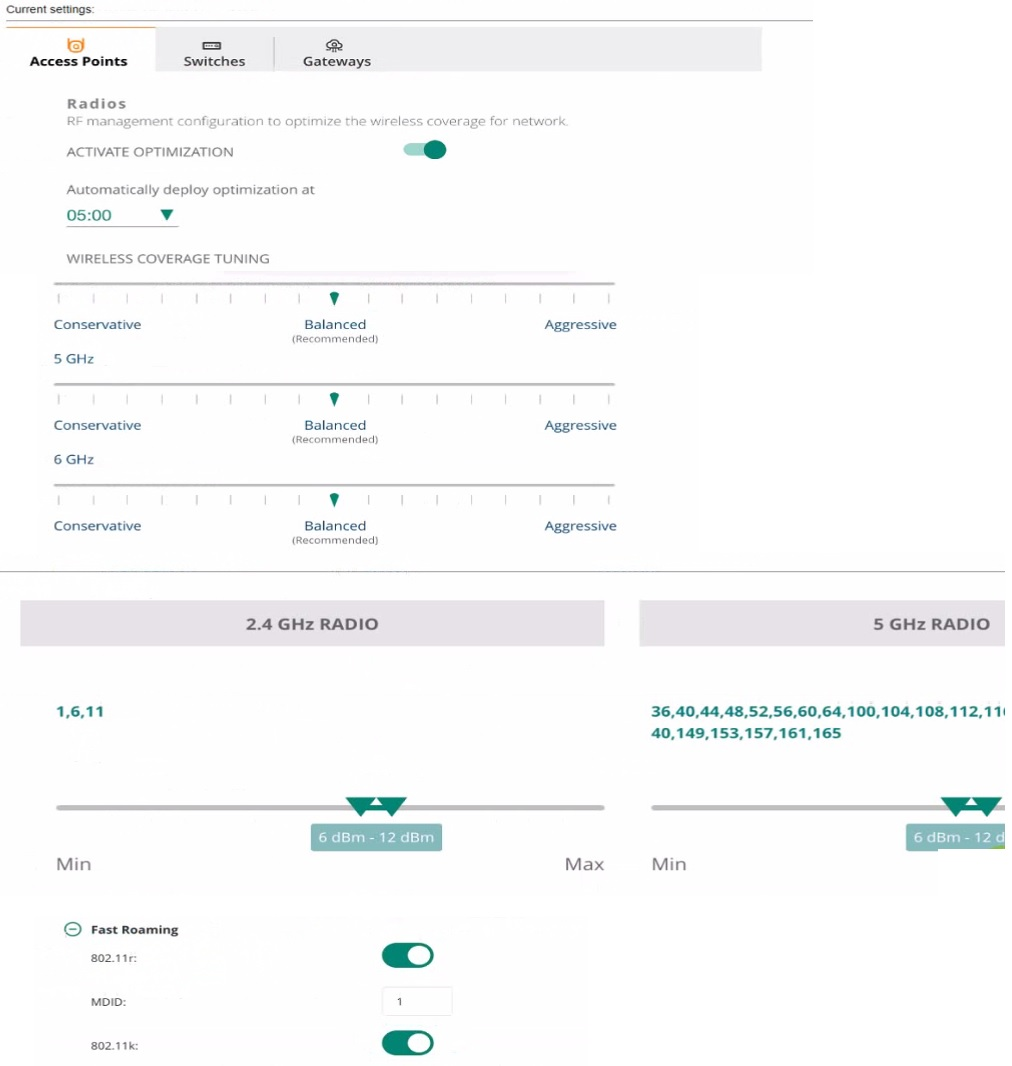Most Recent HPE7-A07 Exam Dumps
Prepare for the HP Aruba Certified Campus Access Mobility Expert Written Exam exam with our extensive collection of questions and answers. These practice Q&A are updated according to the latest syllabus, providing you with the tools needed to review and test your knowledge.
QA4Exam focus on the latest syllabus and exam objectives, our practice Q&A are designed to help you identify key topics and solidify your understanding. By focusing on the core curriculum, These Questions & Answers helps you cover all the essential topics, ensuring you're well-prepared for every section of the exam. Each question comes with a detailed explanation, offering valuable insights and helping you to learn from your mistakes. Whether you're looking to assess your progress or dive deeper into complex topics, our updated Q&A will provide the support you need to confidently approach the HPE7-A07 exam and achieve success.
The questions for HPE7-A07 were last updated on May 1, 2025.
- Viewing page 1 out of 14 pages.
- Viewing questions 1-5 out of 70 questions
A customer is planning to add loT devices that connect wirelessly to the existing 802.1X SSlD. The customer will use ClearPass to authenticate the IoT devices by MAC address but other devices will still need to authenticate by only 802 1X
Exhibit.

The customer provided the current configuration and reported their non-loT 802. IX devices are no longer able to connect. Which configuration change can be made to fix the issue?
The existing configuration for the WLAN ssid-profile has enabled MAC authentication which, while suitable for IoT devices that may not support 802.1X, can interfere with the normal 802.1X authentication process for other devices. By removing the mac-authentication directive from the WLAN configuration, the non-IoT 802.1X devices should be able to connect without issues as the authentication process will not be disrupted by MAC authentication checks. This adjustment ensures that the WLAN ssid-profile is correctly aligned with the authentication requirements for both IoT and non-IoT devices within the network environment, conforming to the best practices for mixed-device WLAN configurations.
A customer has deployed an AOS 10 mobility gateway cluster consisting of three controllers at a single site The WLAN is configured to tunnel wireless device traffic to the AOS 10 mobility cluster. The clients are authorized to use WPA2-Personal. An end-user has opened a ticket with the helpdesk stating they cannot connect their client device to the network. There are other devices currently associated with the SSID with no issues.

Reviewing the output, what Is the issue?
The issue indicated by the output is an invalid pre-shared key (PSK). The logs show multiple failures during the WPA2 key exchange process, which points to a mismatch between the PSK configured on the client device and the PSK expected by the AOS 10 mobility gateway.
Your customer's employees connected to a wired network are complaining about a poor user experience. The customer has UXI sensors deployed on their premises. These sensors nave been running for multiple months. They are testing both the wired network (using the wired Interface of each sensor) and the wireless networks. Your customer used the UXI dashboard to find the reason for the poor user experience to find more details, the customer asked you to check the packet captures that have been downloaded from the sensors using the UXI dashboard.
From the zip file downloaded from the UXI sensors, you checked the "datagrams" .pcap file, but you were not able to find any issues How can you explain this?
It is a common practice to separate successful and failed test results into different files for ease of troubleshooting. If the 'datagrams.pcap' file shows no issues, it's likely because it only contains successful test data, and the failed tests that could explain the poor user experience would be in a different file, such as 'datagrams-failed.pcap.'
A BGP routing table contains multiple routes to the same destination prefix.
Referring to the table below which route would be marked with a ">" symbol?

In BGP, the route marked with a '>' symbol is the best route that is chosen based on BGP attributes in the following order: highest weight (Cisco-specific), highest local preference, originated by BGP running on the local router, shortest AS path, lowest origin type, lowest MED, eBGP over iBGP, closest IGP neighbor, and lowest BGP router ID. Based on the table provided, Option E would be marked with a '>' symbol as it has the highest local preference of 100 which is a decisive factor in the BGP best path selection process.
The wireless administrator for a college campus is gelling reports of connectivity issues when students are working outdoors.

Reviewing the settings above, watch change is needed to align with best practices?
To address connectivity issues when students are working outdoors, increasing the transmission (TX) power range for the 5GHz radios can help improve signal strength and coverage. The setting shown indicates a conservative approach to power settings, which might not provide sufficient coverage for outdoor areas. By increasing the power range, you can extend the wireless signal reach, which aligns with best practices for outdoor wireless coverage.
Unlock All Questions for HP HPE7-A07 Exam
Full Exam Access, Actual Exam Questions, Validated Answers, Anytime Anywhere, No Download Limits, No Practice Limits
Get All 70 Questions & Answers